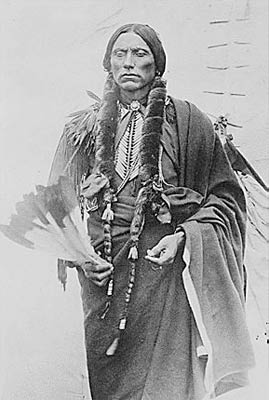
“INDIANS WERE AT OUR DOOR”
By Bob Jamison
Only a few generations ago the dreaded Comanche war parties were certainly a group to be reckoned with particularly in the area of Lavaca Bay. It was August 8, l840 that a large band of ruthless Indians approached the sleepy little sea port of Linnville, Texas on the bay. They burned it to the ground. Two hundred or so folks living there were stunned by the surprise. Many were killed and all but one of the buildings was looted of imported goods before they were destroyed.
The survivors of Linnville (now Placedo, named for Placedo Creek) moved south to Labbacca only three miles south of their village. “Labbacca” with the Mexican pronunciation with the ‘b’ usually sounds like ‘v’, accounts for the present name of LaVaca (also meaning cow in Spanish). It too was a sea port thus the current name is now Port LaVaca in Calhoun County, Texas.
Texans were enraged further by a previous raid in nearby Victoria, Texas where vicious murders and plundering of valuable livestock plus kidnapping of women and children led to the great retaliations by Rangers and volunteer militia. This developed into what historians refer to as the Battle of Plumb Creek. That area is near the present day Lockhart, Texas. August 12, 1840 (only four days after Linnville) is where the brave volunteers first caught up with the Indians and confronted them in a fight.
Accounts of this battle were shocking as the revenge against the Comanches was just as ruthless as the atrocities against their friends and loved ones that had endured. It appears the Indians had stolen so many pack mules and horses with loot that their usual method of raiding; that was attack, kill and escape rapidly, was slowed by those very goods.
Leaders of the Rangers and militia wrote specific accounts of how the Indians murdered their kidnapped hostages when the battle started. Though the Indians did acquire some guns, most of the hostages were shot through and through with arrows and left dying.
The initial battle cost the Indians was about eighty killed in a running fight. Then much of the loot being recovered from the fleeing Indians was either divided amongst the pursuers or taken back to respective owners.
Boldness of the Comanche warriors led by Chief Buffalo Hump was not by accident, however. They too were enraged by “The Council House Fight”. In the spring of 1840 some 33 chiefs from the southern Comanche bands came into San Antonio to discuss a peace agreement with the Republic of Texas. It is to be remembered that these Indians still had countless hostages. The principal disagreement was due to the demand that all of these kidnapped men, women and children would be returned unharmed. If not, the chiefs themselves would be held until this happened. The issue came up that all captives were not represented by the attending chiefs.
Ironically, the chiefs decided to show ‘good faith’ by bringing in a young girl hostage named Matilda Lockhart. But the Texans were appalled that this child had been tortured by having her nose burned off with hot coals. The fight started and the Indians fled. Many were killed and others captured.
Thus the surprise attack on Victoria and the tiny sea port in Calhoun County, Texas happened just five months after the Council House treaty attempt became a disaster. Many different Comanche tribes across the area picked up the war cry. But none were as conclusive as the Great Raid of 1840 in the little port town of Linnville, Texas.